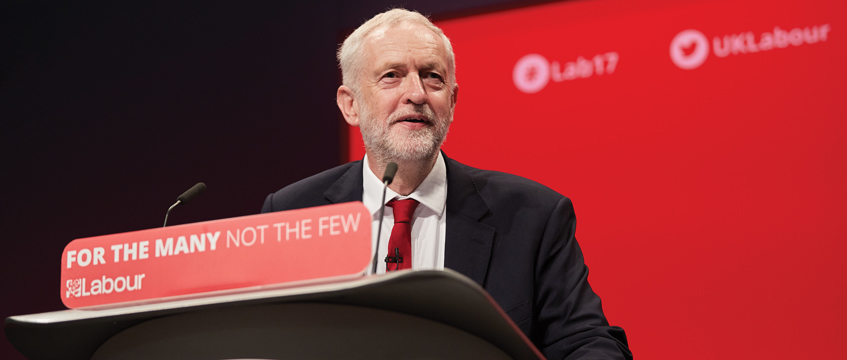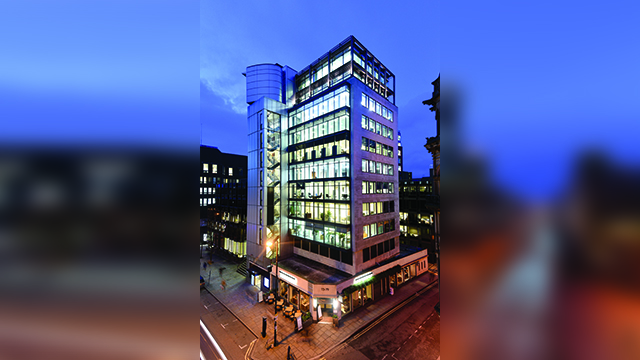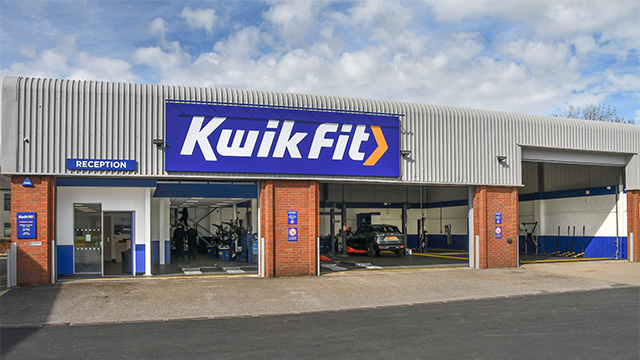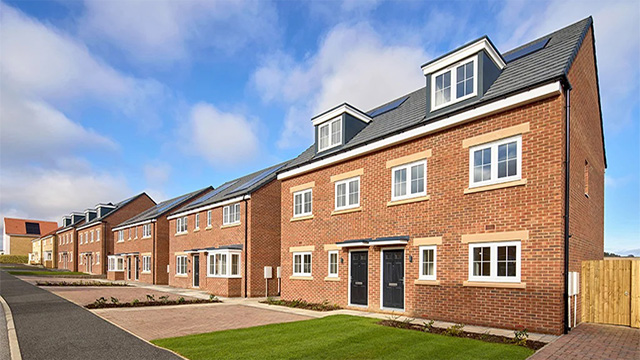Labour grassroots movement Momentum is seeking to take control of London boroughs at next year’s local elections, with serious implications for regeneration projects.
In town halls around the capital, a similar battle is being played out: centrist Labour councillors are fighting the socialist grassroots movement Momentum to maintain power ahead of next May’s local elections.
Dismantling major regeneration projects backed by Labour-run councils is a major campaign strategy for some momentum groups. In Haringey, the 50:50 joint venture between the council and Lendlease, which is designed to deliver 5,000 homes, of which 40% would be priced below market levels, is under siege by a dominant “anti-privatisation” Momentum narrative.
In other boroughs, the Corbynite vision of an alternative definition of regeneration, one which he says will benefit “local people”, not “property speculators”, is already being felt. Last month, Enfield accused Barratt Developments of asking for “unacceptable” terms after the developer walked away from the £6bn Meridian Water development. In Lambeth, Momentum has been a prominent backer of “Stand Up to Lambeth”, a movement opposing the Labour-run council’s estate regeneration schemes.
Engaging with Momentum matters now more so than ever, with Labour expected to gain further ground in London following the 2017 General Election result in which it ousted three Conservative MPs. Forecasts by Newington Communications (see map) suggest the most likely boroughs to turn from blue to red next May are Barnet, Wandsworth, Westminster, Kensington & Chelsea, Havering and Tower Hamlets (where there is currently no overall majority). Labour is also expected to entrench its current majority in several boroughs.
The industry is worried. Dean Clifford, director and co-founder of Great Marlborough Estates, says: “It seems that the business of politics is getting in the way of finding a solution that actually delivers affordable homes, with those on the left of Labour seeing any form of private intervention as a capitulation to crony capitalism. To insist that everything is done your way is pure political adolescence.”
However, most developers are not yet altering their investment decisions on the basis of the outcome of the council election. Will Lingard, a senior director in the London planning team, says: “Where public land is involved I think they are becoming cautious, but that’s more to do with the 50% affordable homes delivery on public land.”
Matthew Weiner, chief executive at U+I, says: “We wouldn’t choose not to work in any borough on the basis of political complexion as long as there’s an inclusive process and if Momentum supports that it will be okay.
“If developers are just going to be whipping boys and that is not unfair in certain instances, then that could be a problem. U+I is about partnership and I think as long as you can have a fair debate then the process can work. Whatever the outcome of the elections, it appears that collaboration is going to become more challenging.
“Part of what is happening in Haringey in terms of where we are in terms of opposition to the arrangements is political and part is a fundamental objection to having a relationship with the private sector at all,” said Haringey Council director of housing and growth Dan Hawthorn.
Together, London’s local authorities are responsible for more than £22bn of spending and will fundamentally shape the capital’s agenda for housing. Who is in control matters. A new political paradigm is coming. Developers need to be ready.
Six boroughs most likely to change political leadership next May
Barnet
Current status: Conservative majority – 30 Labour – 32 Conservatives – 1 Liberal Democrat
Forecast: This will certainly flip to Labour. Home to Margaret Thatcher’s old seat, Barnet is now a marginal borough, although the Conservatives have been in control since 2002. Labour has been targeting heavily following close results in the 2017 General Election.
Havering
Current status: No overall majority – 2 Labour – 22 Conservatives – 24 independent – 6 UKIP
Forecast: Home to London’s largest UKIP Group, with five councillors, the council spiritually considers itself closer to surrounding Essex than to metropolitan London, exemplified by the fact talk of a referendum to break free from the capital remains a live political issue. Labour look set to make gains but the final balance of the council will depend on the resident association and UKIP candidates. UKIP are not polling well at the moment.
Tower Hamlets
Current status: No overall majority – 22 Labour – 5 Conservatives – 1 Liberal Democrat – 17 independent
Forecast: Labour are likely to strengthen their position in the council and will likely win the directly-elected mayoral race, albeit the unique characteristics and recent political history of Tower Hamlets means it’s unlikely to be a walk-over.
Kensington & Chelsea
Current status: Conservative majority – 11 Labour – 37 Conservatives – 2 Liberal Democrat
Forecast: Likely to see Conservative losses, with Labour aiming to take control. Former deputy mayor of London Victoria Borwick recently had her 7,361 vote Kensington majority overturned by Labour councillor Emma Dent-Coad in a shock general election result. The council has also been mired in controversy following its response to the Grenfell Tower fire, which resulted in former leader Nicholas Paget-Brown being forced to step down.
Kingston upon Thames
Current status: Conservative majority – 2 Labour – 27 Conservatives – 18 Liberal Democrat
Forecast: Very likely to change from Conservative to Lib Dem. The Conservatives ended 12 years of Lib Dem control in the last election to win their first majority on the council since 1986. However, the Lib Dems will be buoyed going into the election campaign by the re-election of former Energy and Climate Secretary Ed Davey in the general election following a strong targeted campaign.
Wandsworth
Current status: Conservative majority – 19 Labour – 36 Conservatives – 2 independent
Forecast: Possible swing to Labour. One of the wealthiest London boroughs by average income, Wandsworth Council has been staunchly Tory since 1978. But the loss of Battersea to Labour was one of the shock results on general election night 2017 and was combined with sizable swings to Labour in both Putney and Tooting. The Labour Party is putting significant resources into the borough, in the hope it can secure an upset and seize control of the council in 2018.
Which way will London swing in May 2018?
Next May will see voters across London go to the polls to elect 1,851 councillors in the 32 London Boroughs (excluding the City of London), writes Phil Briscoe, managing director of public affairs consultancy Newington Communications. 
It can easily be dismissed as just another council election, but for the property world, this is the day that defines the political colour of local authorities and their planning committees.
The election will determine council views on issues such as regeneration, town centre investment and affordable housing for the next four years.
It is easy to predict a swing from Conservative to Labour in London, as was seen in the General Election in June. The polls predict an even bleaker outcome for the Conservatives, with recent figures putting them 25% behind Labour across London.
Conservatives already have less than one-third of council seats in the capital, and only have overall control of nine of the London authorities, this low starting point means that losses may be limited.
Although the Conservative’s losses could be relatively small, the casualties could be household names – Westminster, Wandsworth and Kensington & Chelsea are all on the watchlist of borough’s the Labour Party might win. These would trigger political shockwaves that would stretch as far as the prime minister.
Labour start from a strong position that further limits the amount of change we will see in May – it already has outright control of 20 London councils, and minority control of another. There is little realistic chance of any of these councils changing colour, so many of these can be banked as Labour holds now. If anything, Labour is likely to chip away at smaller opposition groups and strengthen its grip on many of these authorities.
However, rather than the most dramatic swing being between parties in May, it could well be between different wings of the Labour Party. As the left-wing Momentum-led element of the party becomes increasingly emboldened in challenging sitting councillors and established candidates, we are hearing of more local authorities that face deselections, and in places momentum is even proposing alternative leadership teams. For the property world, this could be the most significant game-changer in May, as more elected members start from an inbuilt suspicion of private companies and especially of property developers.
The smaller parties will have minor roles, with the only potential significant change of power the Liberal Democrat prize of seizing Kingston from the Conservatives.
But with six months to go until the elections, recent UK politics has shown us how quickly issues and opinions can change. Turnout will be crucial, and will undoubtedly be much lower than the General Election – but who will vote? Will the Conservative vote be suppressed? How will Brexit impact on voting and will EU voters turn out to make their views known in (potentially) their last opportunity before Brexit happens?
Before the election happens, three big issues will dominate the political mood – will Theresa May lead the Conservatives into that election, or will there be a brand new prime minister to boost (or even suppress) the Conservative vote? How will the Brexit negotiations proceed, and how will they be perceived by the largely “Remain” voting London electorate? Where will the economy be in six months time, and how will any movement be filtering through to the London housing market?
Politics in London, and nationally, faces an eventful four years between 2018 and 2022, but the London elections in May have all the ingredients of being the most interesting and watched since the current London boroughs were formed in 1965.
To send feedback, e-mail Louisa.Clarence-Smith@egi.co.uk or tweet @LouisaClarence or @estatesgazette











